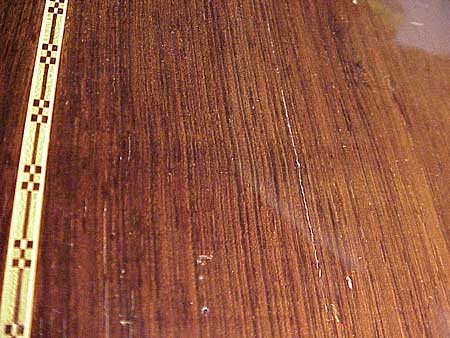Long Reach Pipette Gluing
© Frank Ford, 4/6/00; Photos by FF, 3/9/00
This 1966 Martin D-28 has the tightest crack in its back, way down near the end block:

Because the crack is so tight, I think the only glue I can get in there is the thin viscosity cyanoacrylate. You can't see from this picture that the guitar has a nearly perfect original finish. That's why I don't want to run the glue in from the outside. I'd much prefer to work from the inside so I don't have to do any finish touchup, which would affect the look of this fine vintage guitar.
Here, you can see down inside the guitar, which I have clamped lightly right over the crack, bending it inward, opening the inside of the crack very slightly:

Delivering runny cyanoacrylate way down inside could be a messy procedure, so I've made a quickie extension for my regular disposable pipette:

With it, I can reach all the way down inside.
Here's how I made my extension:

Pretty straightforward stuff. I simply jammed a soda straw into the cut ends of my pipette:

The straw didn't fit tightly enough to make a seal, so I used some cyanoacrylate and accelerated it with the spray catalyst:

